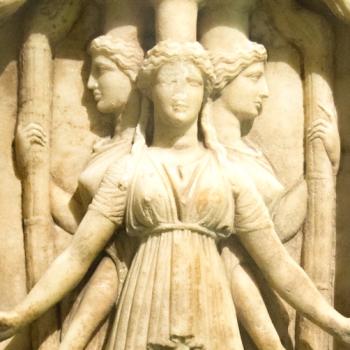I believe the Pagan Umbrella is a big place and there’s plenty of room inside of it for a plethora of ideas, cosmologies, and world views. My own practice of Wiccan-Witchcraft holds a similar space. Wicca is probably best defined by its ritual practices and not any specific theology, but even with that caveat there are a lot of things that have always been a part of most Wiccan practices. One of the most obvious is magick, something that’s hard to escape from in most Wicca 101 books.
There are competing theories on when the Modern Pagan movement truly came of age, but almost all early Modern Paganisms contained two rather noticeable traits: belief in magick and/or deity. In many ways Modern Paganism was built on a foundation of magick and deity, and while it’s certainly fine not to believe in those things, openly mocking or dismissing them is sort of like throwing the baby out with the bathwater. It’s insulting to those who believe, and it shows very little appreciation for those who helped create our modern community. Certainly there are ways to express a non-magickal worldview while showing those who possess one a bit of respect. (And let me add that any attempt to “change” Modern Paganism by removing deity and/or magick from the equation strikes me as extremely offensive.)
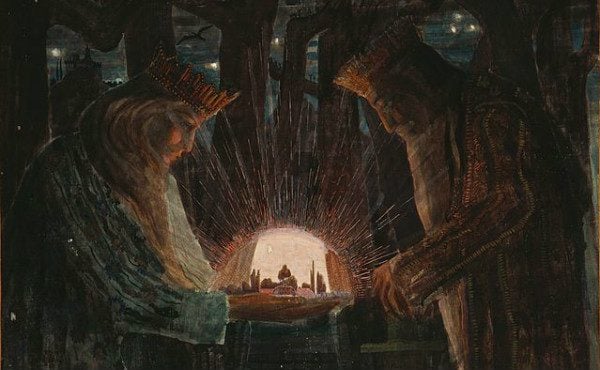
Most Humanistic Pagans that I know are extremely respectful to those of us who believe in magick and the gods, and their rituals are often very much like my own. Energy is sometimes raised, rites honoring the seasons often look like magick to me, and very often the language of polytheism is used in ritual. The gods can certainly be metaphors (if that’s one’s belief), and magick can be looked at as a mode of thinking instead of an occult science, those things are no threat to my beliefs or anyone else’s. However, magick and deity are most certainly a part of our history, and have been from the very start.
Gerald Gardner and Witchcraft Today in 1954
In my opinion the most probable “start date” for Modern Paganism involves Gerald Gardner, who was the first public adherent (and/or creator) of a long-lasting spiritual tradition associated with the Pagan movement. There are several dates one could use to mark this particular “Pagan start,” ranging from Gardner’s alleged initiation in 1939, to his public coming out as a Witch in 1951, to the publication of his first non-fiction book on Witchcraft in 1954. For this article we aer going to start in 1954, because it offers me a chance to easily quote Gardner.
“Being initiated into the witch cult does not give a witch supernatural powers as I reckon them, but instructions are given, in rather veiled terms, in processes which develop various clairvoyant and other powers, in those who naturally possess them slightly. If they have none they can create none. Some of these powers are akin to magnetism, mesmerism and suggestion, and depend on the possibility of forming a sort of human battery, as it were, of combined human wills working together to influence persons or events at a distance . . ..
. . . . .If these arts were more generally practised nowadays, we should call most of them spiritualism, mesmerism, suggestion, E.S.P., Yoga or perhaps Christian Science; to a witch it is all MAGIC, and magic is the art of getting results.” -Gerald Gardner Witchcraft Today, page 15.
Gardner mentioning magic so early in his book isn’t a anomaly either, he uses the word over 100 times in the text! The magic written about here is seen as a natural thing by Gardner, but most certainly encompasses things that most of us would consider supernatural or the occult. Mentioning people as a “human battery” is certainly similar to how I’ve encountered magick in a ritual circle over the last twenty years. 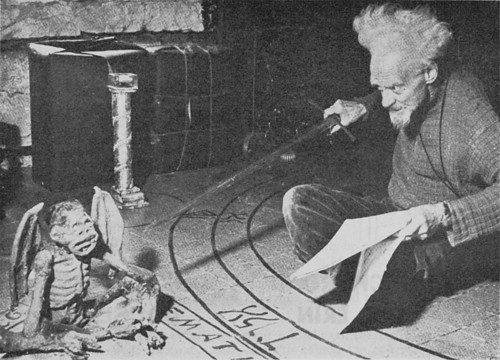
Gardner’s Witchcraft is by his very definition magick as most of us think of it today:
“What are they then? They are the people who call themselves the Wica, the ‘wise people’, who practise the age-old rites and who have, along with much superstition and herbal knowledge, preserved an occult teaching and working processes which they themselves think to be magic or witchcraft.” -Gerald Gardner, Witchcraft Today, page 66.
In this passage Witch-magick is also an occult teaching and working process, which suggests that at least some aspects of it can be taught.
Perhaps my favorite passages about magick in Witchcraft Today occur towards the end of the book. In these passages Gardner admits that his witches don’t know exactly how magick works, only that it does. (See, no dogma!) But make no mistake the practice as Gardner describes is certainly magickal, because it can be performed over a great distance if one has the proper materials (in this instance something that belonged to the person magick is being used for/against):
Now what is this Power? If you ask them they say it is Magic; if you ask them what they mean by Magic, they say they don’t know but that it is something that works.
Witches were taught that magic was contagious, that what you did to a material object which had formed part of a man’s body, or had been in close contact with it, and had absorbed its aura, could have some effect on that person, even at a distance; ‘forming the link’, they called it. -Gerald Gardner, Witchcraft Today, pages 99 & 101 respectively.
Witchcraft Today also spends a lot of time on the god and goddess of the Witch-Cult. The word “goddess” for instance comes up over fifty times in the text, and that’s not including variations such as the “Great Mother.” (“God” as in a male god occurs with similar frequency.) Gardner’s goddess is described as the “queen of all the magics” in a snippet from what would become better known as The Charge of the Goddess (page 24 if you are keeping score at home).
Directly before that snippet from The Charge, Gardner states that the goddess of the witch cult “is obviously the Great Mother,” a deity that “rules spring pleasure, feasting and all the delights of a later time with other goddesses and has a special affinity with the moon.” Here Gardner makes the cult about a specific deity while leaving the door open for other deities. 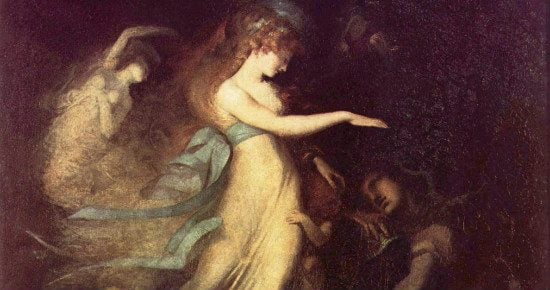
The Goddess and God of Witchcraft can also be experienced, about this Gardner writes:
“By acting the part of the goddess the priestess is thought to be in communion with her; so the priest, acting as the god, becomes at one with him in his aspect of Death, the Consoler, the Comforter, the bringer of a happy after-life and regeneration. The initiate in undergoing the god’s experiences becomes a witch.
Witches quite realise that this communion does not occur every time one assumes the goddess position, but they very soon realise that by doing so they begin to receive thrills which are apt to grow more and more intense when the trance comes on. They KNOW! It is no use saying: ‘This is only suggestion, or the subconscious mind.’ They reply: ‘We quite agree; suggestion or the subconscious mind are simply some of the tools which we use to help to open the Door. . . . . . .’
. . . . . It is the old case of: ‘Unless you experience it yourself you will never believe. When you have experienced it, you don’t believe, you KNOW.’ And, when you have once known the goddess, does anything else really matter? To attain this state there are many roads, and dancing is perhaps the easiest; the calls and chants help, the attitude of the other members is of the greatest assistance – but the true secret is within oneself, and also to some extent in one’s partner or assistant in the art, and it is not a thing that can be forced.” -Gerald Gardner, Witchcraft Today, pages 94-95.
It’s possible to suggest that the priestess and priest “in communion” with the goddess and god are being tricked by their subconscious, but Gardner seems to dismiss this by suggesting that the subconscious is a tool that can be used to open a doorway to deity. The “true secret” being within oneself might again suggest something a little less otherworldly, but adding “one’s partner or assistant in the art” implies something divine or magickal (how else would they link up?). Within Gardner’s writings it’s easy to see a both a magickal and spiritual worldview, and it’s one still found in most Witchcrafts today.
Feraferia is Founded in 1967
Want something a little later than Gardner and a little bit closer to home (if you are an American)? Look no further than Feraferia a tradition officially in corporate as a church by Fred Adams and Lady Svetlana in 1967. Feraferia’s origins go back a little bit further than 1967, as Adams began putting together the cosmology found in Feraferia a decade before, he also started the ritual group the Fellowship of Hesperides in 1959.
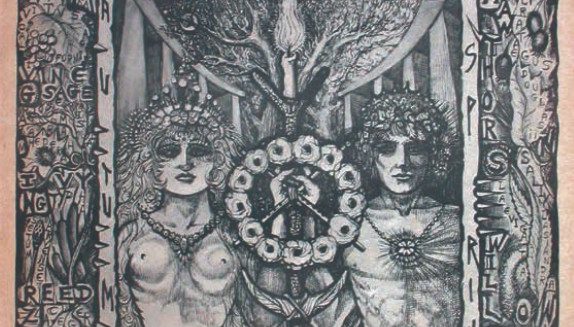
In an interview for this website with Jo Carson (President of the Feraferia Board of Directors, and author of Celebrate Wildness) talked about Fred Adams’s journey into Paganism:
“Feraferia germinated in Southern California in 1956, when Fred Adams had a profound vision of the Goddess. He wasn’t expecting it at all. He was walking across the campus of LA City College, and suddenly he had this sensation throughout his body that the Goddess is the most essential nature of the universe. He was really excited by this. He’d been reading books about ancient matriarchies and witches and Greek mystery religions, but he really wasn’t expecting anything like that to happen to him.
The experience was thrilling, so Fred told his friends about it. He wanted other people to be able to experience something like what he had experienced . . . . So he got some of his friends together and they formed the Hesperides Fellowship. Hesperides is a word for paradise. They did a lot of the same kinds of things that Feraferia still does. They formed a communal household, and tried to live in an ideal way, going out into the wilderness to tune in to nature and the Goddess.”
Feraferia began with a spiritual moment, a vision of the Goddess*, but that’s only the beginning when it comes to Feraferia’s relationship with what some might call “supernatural entities.” In Celebrate Wildness Carson explains the role of the fay in the natural world and in the Feraferian world view:
“Next we explore the role of the fay, the Faerie Folk, who have become so distant now from our urban cultures as to seem almost fantasy beings. Every indigenous culture still knows them, however, and we can too. These real beings inhabit the hills, the trees, the rocks, the caves, and are the conscious essence of the natural world. Where did they come from and what do they have to tell us? How can we play and dance with them? Why are they so important?” -Jo Carson, Celebrate Wildness, page 19.”
According to Carson magick in Feraferia is different than in other Pagan traditions (like Wicca), but when reading her take on it I can’t help but think of how magickal its sounds to me:
“It is not like Wicca, or ceremonial magic per se, although Fred told me he thought of himself as a ceremonial magician. We don’t do spells or call up demons. We’re more oriented to the biomes and the land, planting and celebrating it. We use trance and song to call on the faerie folk, and we use the magic of blessings, enchantment, and dedications in things like healing work and empowering our wilderness charms. We mark sun, moon and star risings and settings on our henges, and travel to the stars in trance. We certainly use the magic of eros, and that can be profound. It almost goes without saying that we talk to trees, but also to landforms and land spirits too.” -Jo Carson (taken from our conversation in 2015)
The exact start date of Modern Paganism, might be up for debate, but not the presence of magick and deity in its origins. We don’t all have to agree on the reality of such things, but we can’t deny that they were there at the start.
*I’m not sure just how Adams’s conceived of his Goddess, and many of the myths involving goddesses in Feraferia read like metaphors relating to the change of the seasons. In the instance quoted here, Adams obviously had some sort of profound spiritual experience, and whether that moment was an actual Goddess talking to him or the Earth its self is immaterial to me. If it walks like deity, talks like deity, and quacks like a deity . . . . . .











